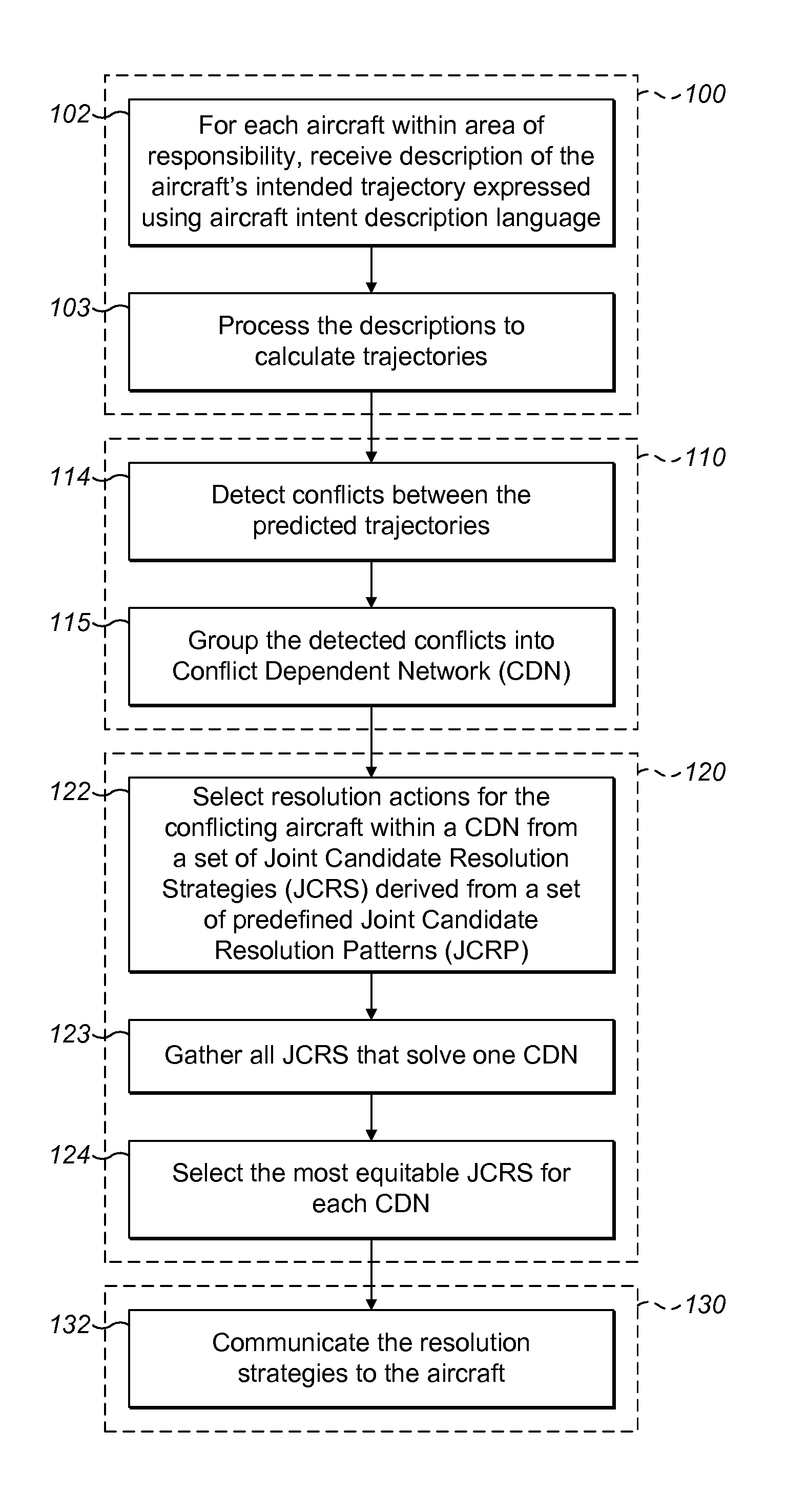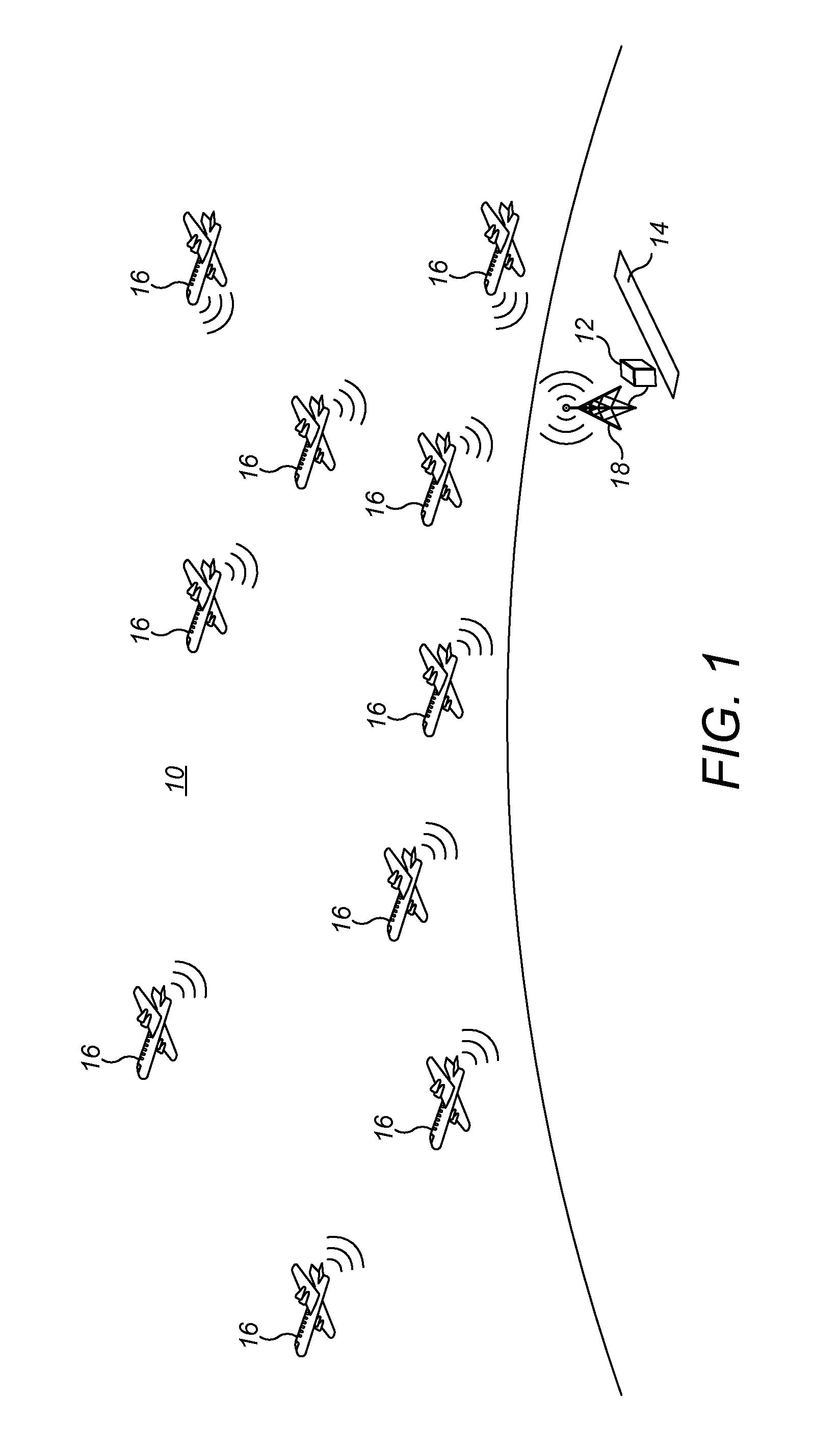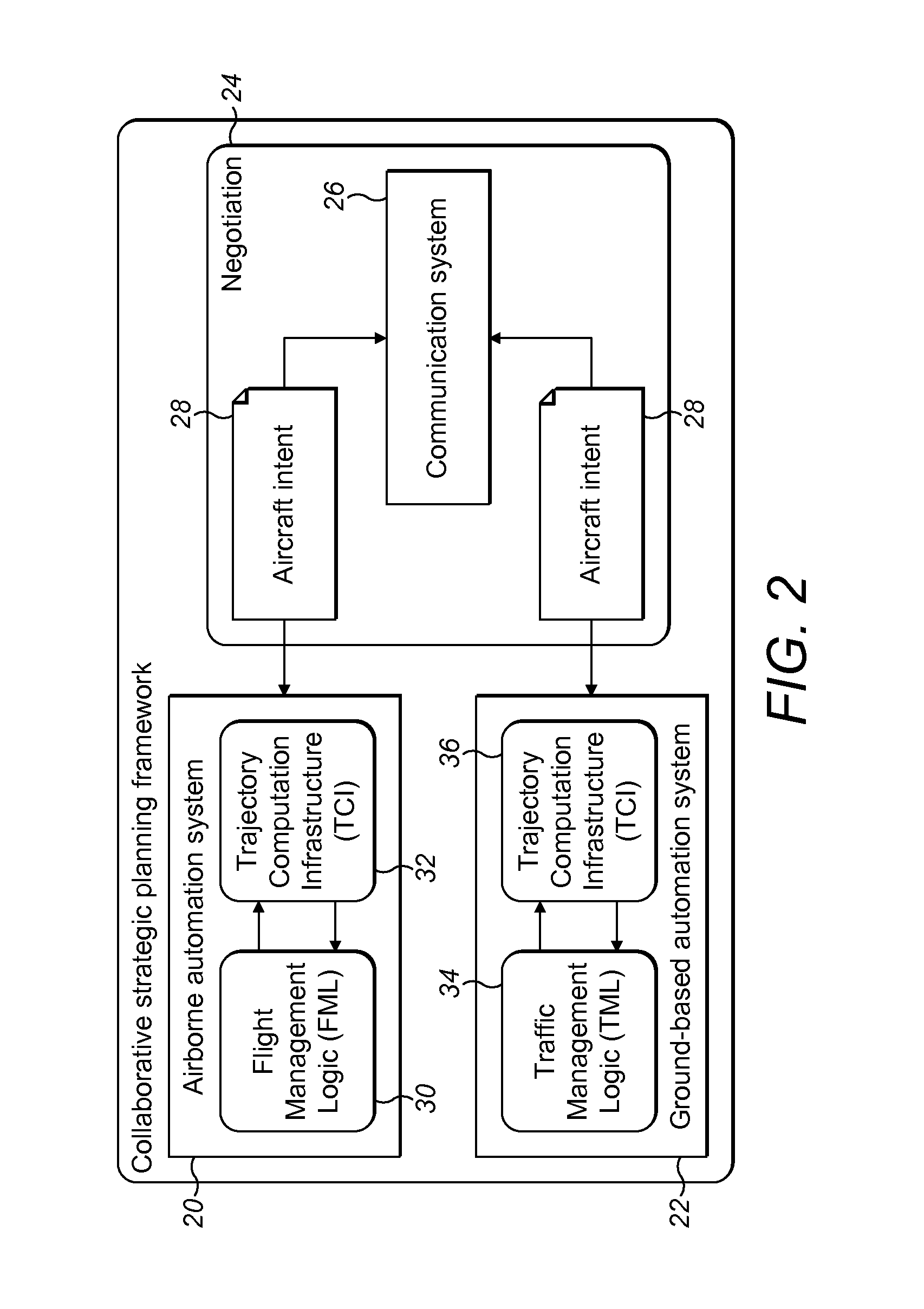Conflict detection and resolution using predicted aircraft trajectories
a technology of aircraft trajectory and conflict detection, applied in the field of automatic management of airspace, can solve problems such as affecting the detection and resolution of conflicts, affecting the accuracy of aircraft trajectory, so as to achieve the effect of large penalties and low cos
- Summary
- Abstract
- Description
- Claims
- Application Information
AI Technical Summary
Benefits of technology
Problems solved by technology
Method used
Image
Examples
Embodiment Construction
[0043]The present disclosure provides methods and systems that enable a ground-based airspace management system to de-conflict strategically the trajectories of aircraft under its responsibility, regardless of whether the aircraft are manned or unmanned, in any traffic scenario including converging traffic patterns.
[0044]System Overview
[0045]FIG. 1 shows schematically an airspace 10 under the control of air traffic management facility 12. In this example, air traffic management 12 is located at an airport 14 and is responsible for aircraft 16 arriving and departing from the airport 14, as well as those aircraft 16 passing through the airspace 10.
[0046]Air traffic management 12 is provided with associated communication means 18 to allow two-way communication with the aircraft 16 flying through the airspace 10. The aircraft 16 are equipped with complementary communication equipment (not shown in FIG. 1) of any type well known in the field of aerospace. For example, communication may b...
PUM
 Login to View More
Login to View More Abstract
Description
Claims
Application Information
 Login to View More
Login to View More - R&D
- Intellectual Property
- Life Sciences
- Materials
- Tech Scout
- Unparalleled Data Quality
- Higher Quality Content
- 60% Fewer Hallucinations
Browse by: Latest US Patents, China's latest patents, Technical Efficacy Thesaurus, Application Domain, Technology Topic, Popular Technical Reports.
© 2025 PatSnap. All rights reserved.Legal|Privacy policy|Modern Slavery Act Transparency Statement|Sitemap|About US| Contact US: help@patsnap.com



